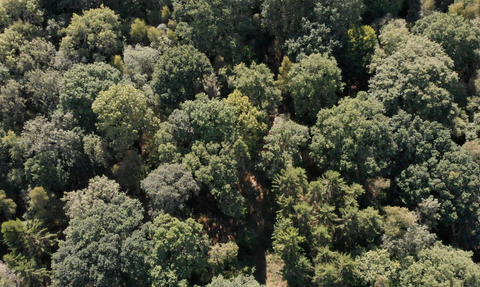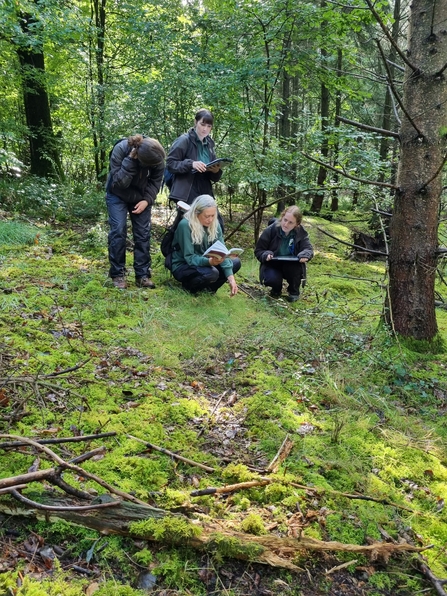
Great Wood
Ancient woodland now covers just 2.5% of the country. As one of the 20 largest ancient woodlands in the county, protecting Great Wood for nature will bring huge benefits to both wildlife and people once restored.
Great Wood includes probably the largest collection of wild service trees in the country, as well as fantastic stands of oak, with some trees probably more than 200 years old, making it nationally important for conservation.
This long-term project will restore Great Wood to its former glory. Large swathes of conifers, which currently cover a third of the woodland and do not support much wildlife, will gradually be replaced with a mix of native broadleaf trees.
A conifer plantation at Great Wood. Note how closely they have been planted so that no light can reach the woodland floor, leading to a lack of woodland flora such as bluebells.
We will create more space for the rare wild service trees to flourish. With the help of volunteers, we will create glades, widen paths, coppice trees and remove invasive plants to improve the health of the woodland by encouraging fresh growth and providing more woodland marginal habitat. A much more diverse understorey of plants will spring back; more light reaching the woodland floor will enable huge carpets of bluebells to bloom again.
Many more bird and butterfly species used to be found at Great Wood. The more diverse habitat will attract back beautiful birds such as nightingale and willow warbler and butterflies including the purple emperor and pearl bordered fritillary. Sadly, the dainty wood white butterfly, which once thrived in Great Wood, has been absent from Wiltshire for many years; our surveying and habitat improvement will help us reintroduce this rare species to the woodland.
Surveys have now been completed to inform butterfly conservation works, and for protected species including Great Crested Newts and bats.

Ecologists surveying at Great Wood.
Ponds in woodlands provide homes to a huge variety of wildlife. With droughts becoming more common, ponds will be key in increasing resilience to climate change, helping sustain Great Wood’s bird, mammal, amphibian and insect residents. We will restore Great Wood’s existing large pond, which has become overgrown and too acidic due to conifer needle fall, and create a second. The Great Crested Newt population will grow and a host of dragonflies will dart across the ponds.
The overgrown pond at Great Wood. This will be restored so that Great Crested Newts can flourish.
Great Wood is a big step towards the target of doubling our own land managed for nature by 2030.
We will work closely with local farmers and other landowners to connect Great Wood to other nearby ancient woodlands and hedgerows as part of a wider nature recovery network.
Establishing a programme of education, wellbeing and engagement activities is another exciting part of this project. There are no public rights of way in Great Wood and we can control access, making it a rare resource for education and vulnerable groups to relax and learn. From the new Natural History GCSE, to forest school, guided walks and eco-therapy, we will provide a host of engaging activities for the community.
We took our two Swindon Adult Wellbeing Groups to Great Wood in May, where they were led on an amazing nature walk and identified many types of wild flowers such as orchids and ragged robin, as well as a fleeting glimpse of a small pearl-bordered fritillary butterfly. Great Wood also proved to be a great location to practice mindfulness.
We thank our long-term supporter Biffa Award, who provided most of the funding for this project through the Landfill Communities Fund, The Underwood Trust, and all those who donated to our appeal.


©Philip Precey
